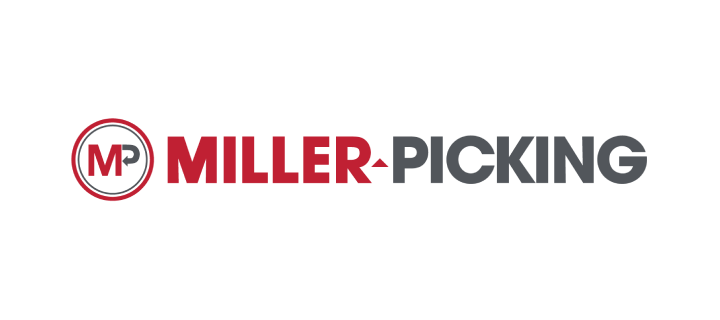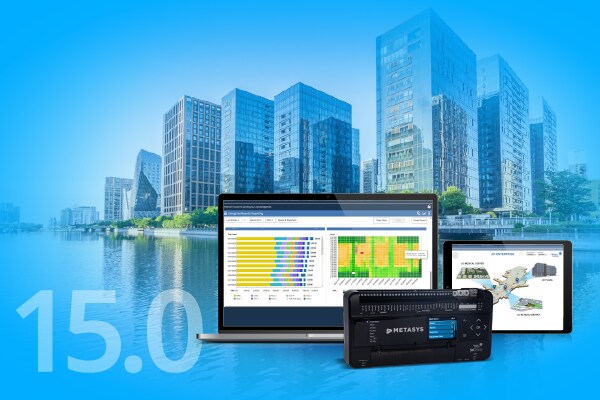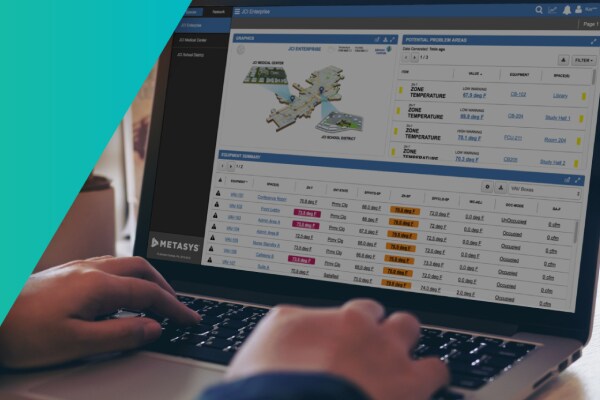- Johnson Controls
- Insights
- You can’t afford an out-of-date BAS
You can’t afford an out-of-date BAS

What to look for as you develop your upgrade plan
Like your phone, your television and your car, building automation systems have evolved dramatically over the last several years. Technology keeps advancing and performance keeps improving, giving you powerful new capabilities to help make your building more secure, your systems more efficient and your job easier.
That also means aging BAS hardware and software components are being phased out of support or discontinued. “Your provider should be pairing any phase-outs with direct replacements,” says Chris Lane, Johnson Controls director of Metasys product management. “The goal is to offer affordable upgrades that users will find familiar but significantly better.”
Lane says providers should make it easy to keep your BAS current. “Don’t wait for aging components to fail,” he says. “Develop a step-by-step plan with your provider—a plan that fits your timetable and budget.”
As you plan to modernize, look for systems that will keep you on top of change, regularly adding features to help enhance cyber security, improve productivity and boost building performance.
Enhance cyber security
Cyber security is an increasingly important consideration in an increasingly connected world. Software and hardware upgrades can help you prevent unauthorized access, meet IT standards and stop depending on security patches. The latest supervisory controllers use secure operating systems like Linux, comply with current security standards and use features like secure boot, which helps prevent malicious software from downloading at system startup. Also check for features like a cyber security health dashboard, which alerts you to out-of-date software, policies and permissions.
Improve productivity
Modern systems are designed so that your team spends less time navigating and more time taking action
- Intuitive user interface. The optimum approach is to clearly organize relationships between spaces and equipment – or the equipment serving a space—enabling users to zero in on the area of the facility that needs attention.
- Graphics and icons. Even new users can move confidently through a BAS featuring the graphics so familiar in today’s technology. Look for photorealistic images that make visualization easy.
- Dashboards and widgets. Essential information should be logically organized and quickly accessible.
- Reports, alerts and alarms. Following a clear escalation protocol, your BAS should enable your team to rapidly detect and troubleshoot potential issues.
Boost building performance
Advances in BAS hardware and software can smooth operations, enhancing overall building performance.
- More powerful supervisory controllers. Putting higher-capacity engines at the heart of your system speeds processing and enhances efficiency. Look for engines with diagnostic LEDs to simplify service, and USB ports to support future upgrades.
- Modernized equipment controllers. Controllers that are easy to install and perform better enhance building operations. IP-enabled controller options, especially those that can be configured in a ring network, cost-effectively deliver resiliency.
"Don’t wait for aging components to fail. Develop a step-by-step plan with your provider—a plan that fits your timetable and budget."
— Chris Lane, Director of Metasys Product Management
Amplify troubleshooting with fault detection and triage
While alarms tell you that system points have reached preset thresholds, fault detection offers an even smarter way to indicate potential building system issues. Fault detection uses more system points, delays and thresholds to highlight issues faster. This modern feature requires minimal configuration and puts issues in context, automatically filtering and categorizing to help you address the most pressing issues first. Fault detection also helps minimize nuisance reporting, further enhancing team productivity. Look for a bonus feature—a system that highlights energy-saving opportunities.
Fault triage is a valuable add-on to fault detection. In addition to the fault name and description, you can see details, possible causes and activity. Fault triage enables both experienced and inexperienced technical staff to find and fix issues fast.
Operate strategically
To get the greatest return on your BAS investment, think strategically about operations and maintenance. It’s more cost-effective to regularly ensure system components are working than to face sudden unplanned downtime. Ask your provider about BAS service agreements, which help you identify opportunities for improvement and should include:
- Controls device performance verification: Check all HVAC components associated with a piece of mechanical equipment to make sure devices are working.
- Controls system performance verification: Inventory networks and controllers for conformance to security and manufacturer’s standards, ensuring your BAS network is as secure as possible.
- Facility performance verification: Check control sequences and points associated with a piece of equipment, identifying common issues and energy-wasters.
Additional provider services like remote monitoring, onsite training and technical support all enhance operator productivity. Finally, upgrading software gives you a better user interface, overcomes common frustrations, and eases integration with new technologies and components. Equally important, using the latest software helps reduce the risk of security breaches. Look for the option of a software subscription, which automatically keeps your system up to date over a specified term.
Modernize with Metasys
The Metasys building automation system delivers the features and benefits that help you meet your goals.
World-class user interface, including Cyber Health Dashboard. Metasys sets the standard for an intuitive UI, shortening the learning curve so your team can work more efficiently. The latest release includes the award-winning Cyber Health Dashboard, empowering you to quickly address potential security issues. Other Metasys features include:
- Intuitive navigation by building space, for faster troubleshooting and less time on task
- Alarm Manager to quickly identify and prioritize alarms, for faster troubleshooting
- Photo-realistic graphics, for cleaner visualization right from your mobile device
- Built-in graphics manager, eliminating the need for separate tools to create or edit graphics
Next-generation hardware. A full range of new Metasys network engines offers sleek, compact design for easy installation, high-capacity memory and processing to enable future upgrades, and essential features like the Linux OS and secure boot feature described above. New Metasys equipment controllers create a flexible N2-to-BACnet MS/TP migration path and feature updated protocol standardization and system interoperability.
An exciting upcoming release. The next major Metasys release, Metasys 11.0, will feature FIPS 140-2 compliance, fault detection and fault triage—as well as all the Metasys capabilities you expect.
30 years of innovation and partnership. From the launch of Metasys in 1990 to today, Metasys provides the experience, continuous enhancements and partnership with our customers to help you do your job effectively.
With the phase-out of aging BAS components, the urgent need to protect data and buildings, and more pressure than ever to get measurable results, you can’t afford an out-of-date BAS. Let us help you set the path to cost-effective upgrades – and gain the benefits that lead to a better bottom line. Talk to our Metasys experts today about modernizing your BAS.
Stay up to date with the latest news
Related Items
Metasys 13.0
The newest Metasys release helps enhance security with BACnet/SC compliance, speeds troubleshooting, and maximizes system performance.
Metasys Tips
Your building automation system likely lets you manage buildings and systems remotely. But what best practices should you follow? Which features should you use?
























.jpg?la=en-ZW&h=320&w=720&hash=A40D709EBC2BC33ED5B5438DAE8A3F42)














.jpg?la=en-ZW&h=310&w=720&hash=57A5D8DBDBB70BA989FE342E97FC7B8C)


.jpg?la=en-ZW&h=320&w=719&hash=60BB26AE1EE6030C04BB4E0C1E94B0EC)
.jpg?la=en-ZW&h=306&w=720&hash=85191C5ECD82203B545F5B73E28C65C5)

.png?la=en-ZW&h=320&w=720&hash=7338885F69DE18696FE749CBAEF250C7)



















